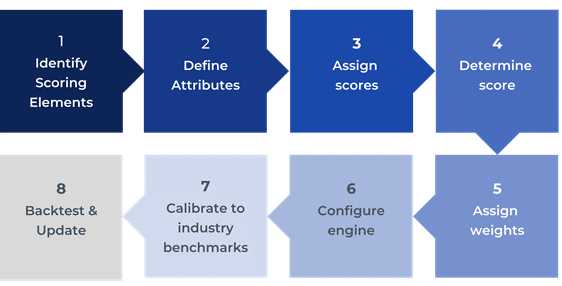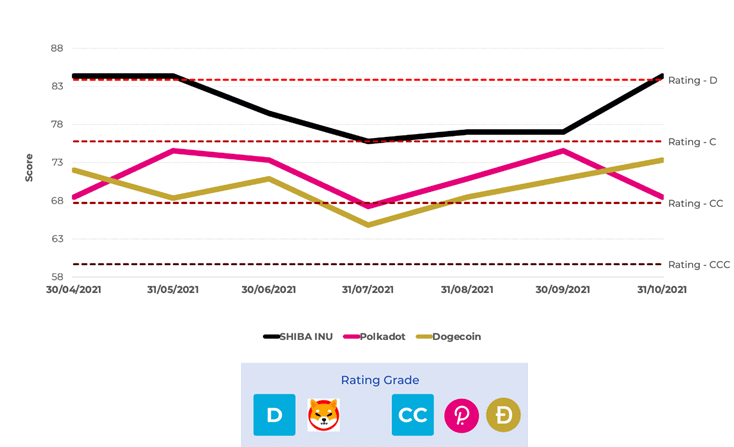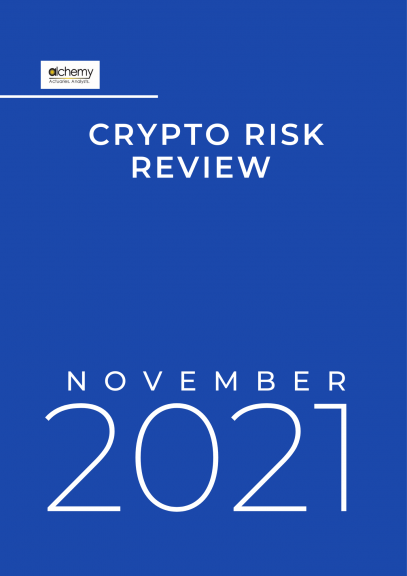The need for a crypto risk assessment framework
Crypto news and crypto risk are once again in mainstream media. The rug pulling of the SQUID token saw market prices fall to $0 from a short-lived high of $2800 within a span of five minutes. Investors watched helplessly unable to sell due to an anti-dumping clause. Developers made away with the funds while apparently abandoning the project. This is not the first-time investors have suffered in this market and it will not be the last. There have been other instances ranging from the pump and dump to outright fraud.
The crypto market is one fraught with speculation, risk, and uncertainty. The appeal of high returns along with rags to riches stories we hear every day, create a great deal of interest in new offerings. The volatility and price range of Bitcoin as it bounced from $30,000 to $60,000 and then dropped all the way down to $29,000 only to bounce back up again to $69,000 all within a span of 11 months shows the risk associated with trying to time the market. Beyond volatility regulatory intervention remain a real risk. Two examples are the news of possible punitive measures by China for large scale Bitcoin mining and US tax law provisions. These further highlight the riskiness of investing in these assets.
A case for crypto risk assessment
Despite its checkered history, there remains significant interest – individual and institutional – for crypto. From diversifying investment portfolios and to be fair, the fear of missing out. Sometimes even to back new ventures is not possible in or with traditional markets.
For start-ups particularly those in technology, it is a way to raise capital cheaply to fund projects that would otherwise not see the light of day due to economic, trust, legal, regulatory, location restrictions. Crypto enables access to capital for new technologies as well as old ideas. Ideas that are disrupting the way we live, bank, learn and access information, goods, and services.
How do we navigate through the crypto sea of competing opportunities and accompanied risk? Is it possible to spot a scam? The need for a risk assessment mechanism that screens, tags and filters the riskiest of crypto products from the relatively safer would be a good guiding tool.
Depending on data availability, an assessment tool can be a simple scoring engine or a more complicated algorithm. The latter provides overall ratings with individual scores for certain characteristics. Market opportunity, technology, ecosystem, team, token performance, the progress of the project’s roadmap.
Steps for building a crypto risk assessment engine
So let’s assume you have made the decision to invest in crypto. How would you go about building your own crypto risk scoring engine to help you decide which assets to choose? Or which exchange to trade on?

i. Identify crypto risks
The first step is to define the risks that cryptocurrencies and exchanges face. Risks highlighted in Willis Tower Watsons’ 2019 “Cryptocurrency: Risk management overview” include:
- Unclear regulation
- Custody
- Cyber security
- Volatility and illiquidity
- Business and reputational risk
There may be others.
ii. Identify scoring elements/factors
After identifying the risks that you as an investor could possibly be exposed to, the next step is to identify factors that could act as possible indicators for the extent of these risks. We have provided some examples below:
| Crypto Risk | Factor |
| Regulation | Is the currency/ exchange regulated? Is the currency pegged to an asset? Are reserves kept for pegged currencies? Are these reserves audited and maintained on a regular basis? |
| Custody | Who holds the private keys to the wallets? Is there an anti- dumping/ anti-selling clause present? |
| Cyber security | What security algorithm/ technology is used to verify a transaction/ confirm a block? Is the exchange centralized or decentralized? |
| Volatility | What is the price volatility of the asset? What is its market capitalization? Does it have an infinite supply or is the total circulation supply limited? What proportion of total circulation supply is remaining to be issued? |
| Illiquidity | How many transactions are carried out per day? What is the bid ask spread? What is the ownership structure by the time the asset is held? |
| Business & Reputational Risk | White paper Team Roadmap progress Market sentiment Purpose /Type of Coin Age |
iii. Define attribute values and assess risk scores
A risk factor is only useful for modelling purposes if relevant data is available for it and is measurable. Data may be quantitative or qualitative. You must be able to transform either form of data to a standardized score.
a. Quantitative data
For example, data for ownership by time held is available as a proportion of total investors. You have the percentage of Hodlers, those who hold the asset for more than 1 year. Cruisers who are likely to hold the asset for 1-12 months and Traders who are likely to sell with 30 days. You may transform the data to a score in any of three ways mentioned below:
A) Score = (1- % Hodlers) x 10, or
B) First assign arbitrary scores of 1, 5 and 10 to Hodlers, Cruisers and Traders respectively. Then determine a weighted score with use the proportions in each category, or
C) Based on binning the information across currencies and exchanges and assigning scores to each bin based on relative riskiness
Or you could use a more relevant formulation of your choosing.
b. Qualitative data
If the factor is subjective, use an exclusive scale of attribute values. Such as Low, Average & High, or Positive, Neutral, Strong, etc. to define a measurable range for it. Based on judgement, assign a score for each attribute value.
For example, if you are looking at the factor “Purpose”, you could have the following attribute values to define it.
- “Store of value” (if used as an inflationary tool or if it enables multiple types of transactions), or
- “Meme coin” (used if the token or coin is solely for specific project-based transactions, e.g., participating in a game).
Scores assigned to these attributes would reflect the depth of the purpose behind the coin or token. The more purposeful the coin, the lower the risk of the crypto asset. You may assign a score of 1 to “Store of value” and a score of 10 to “Meme Coin”.
iv. Assign weights, configure the engine, calculate the score and calibrate to industry benchmarks
Once you have successfully assigned values and scores to your scoring factors, an overall score may be assessed. Weigh each factor based on its significance and importance in the scoring engine. Calculate a weighted average overall score for the crypto asset using the individual scores for the risk factors and their weights. Alternatively, weights could be parameters. Solve for them by benchmarking results from the model to risk or performance scores currently used by the industry. This sets a baseline, to begin with.
v. Backtest and update the model
Test and adjust the efficacy of the scoring algorithm over time as actual experience develops.
You may also assign a lettered investment rating grade based on the overall score. Rating grades tend to be more intuitive and relatable for investors.

Crypto Risk Review
We use this same framework in our monthly issue of risk analysis of popular cryptocurrencies. If you’re interested in learning more, contact us or click here to access the latest issue now.

